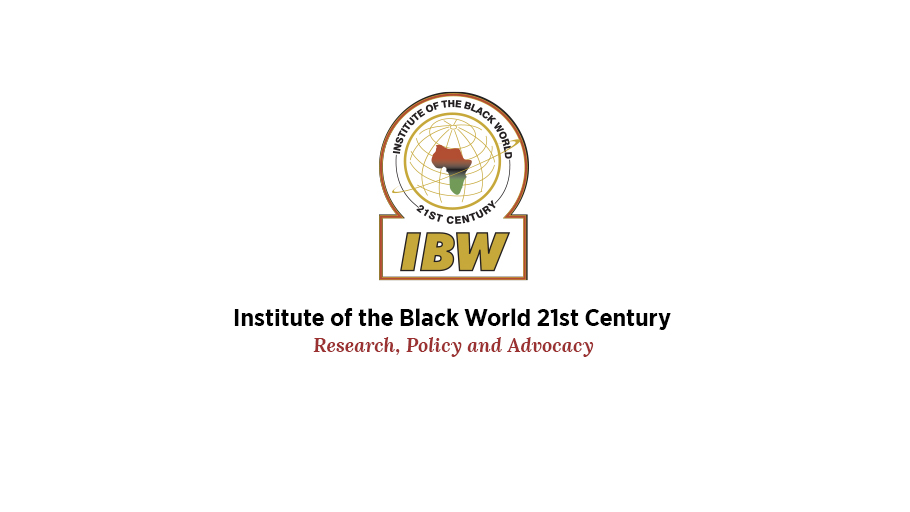
Wednesday, August 27th 2014—Busboys and Poets Cosponsored by: Institute of the Black World and Institute for Policy Studies Key Themes/ Quotes: “I grew up in St. Louis and I know…

Wednesday, August 27th 2014—Busboys and Poets Cosponsored by: Institute of the Black World and Institute for Policy Studies Key Themes/ Quotes: “I grew up in St. Louis and I know…

Last spring, The Nation launched its biweekly student movement dispatch. As part of the StudentNation blog, each dispatch hosts first-person updates on youth organizing. For recent dispatches, check out July 25 and August 12. For an archive of earlier editions, see the New Year’s dispatch. Contact studentmovement@thenation.com with tips. Edited by James Cersonsky (@cersonsky).
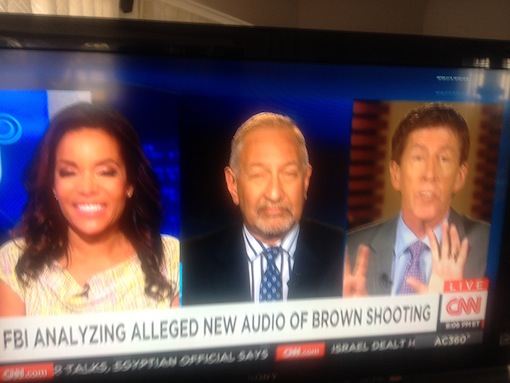
Given the fact that the Jim Crow media are dominated by the POVs of middle and upper-class whites, mostly males…

One commenter on Salon got my attention last week during the furor that followed my essay about “white privilege” as a concept that helps us understand both what actually happened in Ferguson, Missouri, and the racially polarized response to those events. In post after post, this person repeatedly tried to strike a middle ground between fundamentally incompatible positions that reflect opposing worldviews, between the idea that white privilege is an immensely significant if largely hidden dynamic that shapes much of American life and the proposition that white privilege is a left-wing fiction. This person’s brave effort to split the difference – or, less charitably, to deflect the question without rejecting it entirely – didn’t work, but I found it instructive.
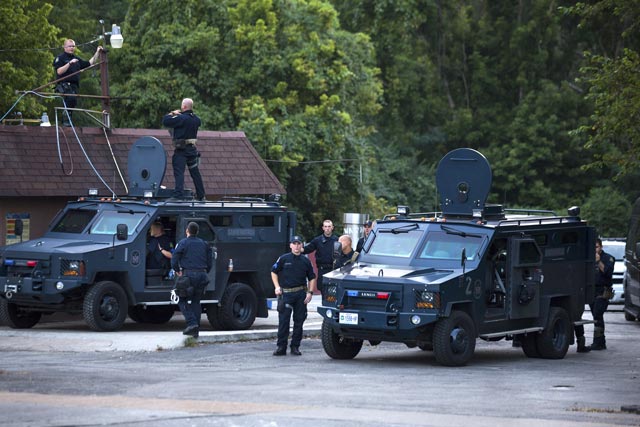
Last Tuesday, two St. Louis police officers shot and killed 25-year-old Kajieme Powell just a few miles away from the ongoing protests sparked by the police killing of another young black man, Michael Brown of Ferguson, Missouri.

The days succeeding the tragic police shooting death of an unarmed black teenager in Ferguson, Missouri, have further affirmed or exposed several unfortunate realities present within our society today.
Events such as the killing of unarmed, 18-year-old Michael Brown in Ferguson, Mo., can provide the moral shock that political movements need to build their ranks and bring attention to a community’s afflictions. They can be like the murder of 14-year-old Emmett Till in 1955 or the beating death of Matthew Shepard in 1998 — transformative episodes that remake perceptions and force a society to abandon abhorrent practices.
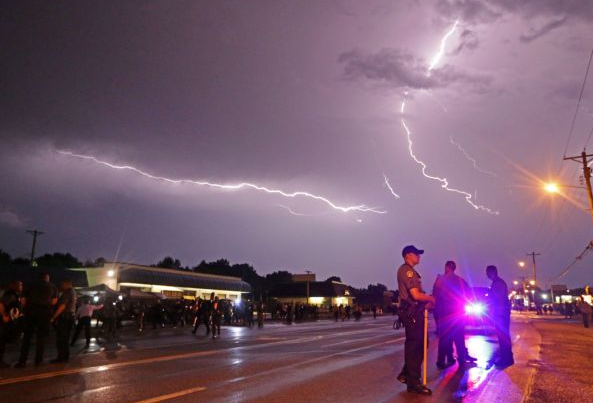
“It keep saying ‘no network error’. We had a foreign reporter on the roof with us and she wasn’t able to get a signal on her cell phone. And people on the ground were saying ‘I can’t tweet out.’”
The tear-gas, rubber bullets and smoke bombs fired in Ferguson, Missouri have fed outrage over police militarization in the U.S.
The shooting of an unarmed black teenager by a white police officer in the southern United States earlier this month has led to widespread public outrage around issues of race, class and police brutality.
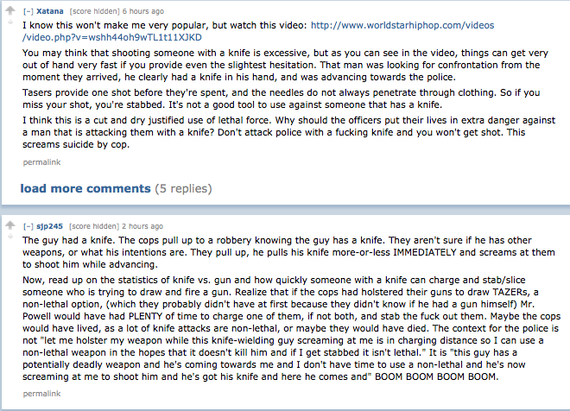
The police officers who shot and killed Kajieme Powell, 25, in St. Louis, Missouri, on Tuesday did so while being recorded by a man with a cell phone camera.
Racial Profiling: “Crisis Of Distrust: Police And Community In Toronto” (available via YouTube)
With focus on Toronto, this 30-minute documentary deals with the process of carding, a form of racial profiling in which citizens are randomly stopped and asked for identification. This is a very specific example of a much larger problem that rears its head in a variety of forms, but “Crisis Of Distrust” makes for an effective case study of the underlying racism at play.
Police Brutality:“No Justice, No Peace” (available via YouTube)
“No Justice, No Peace” takes on the reality of police brutality in California. Through disturbing case studies and such daunting statistics as the fact that, according to the Bureau of Justice Statistics, “an average of 400 – 500 innocent people are murdered by law officers in the United States every year,” Liberation News peels back the racial reality which underlies such violent iterations of law enforcement.
Police Accountability (Or Lack There Of): “These Streets Are Watching” (available via YouTube)
Through the communities of Berkeley, Denver and Cinncinati, this Copwatch documentary deals in organized action against police misconduct. Director Jacob Crawford focuses on the lack of accountability for local law enforcement and attempts to lay down a guide for how to handle police predicaments. The images provided here make for a frustrating look at the human rights issues at play.
Racism In The Media: “The Modern Racist Paradigm”(available via YouTube)
“The Modern Racist Paradigm” deals in the institutionalization of racism as it is normalized through white media. It is myopic to talk about “the media” as a conglomerate with an organized agenda. Although these trends (i.e. the way white people “commit crimes” and black people are “criminals”) are undeniable and play a major role in shifting national perception.
Impact Of The Media On The Justice System: “The Central Park Five”(available via Netflix)
This film from our original set of documentaries to watch on Netflix tracks the direct effect of the media on public perception and, more troublingly, the criminal justice system. The story follows five boys who were wrongfully convicted as a result of mass hysteria surrounding the 1989 rape of a jogger in Central Park.
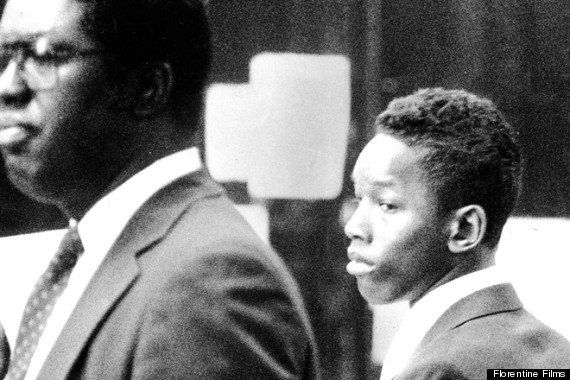
Racism In Communities: “Shenandoah” (available via Netflix)
Featured on our second set of documentaries to stream on Netflix, “Shenandoah” is a disturbing example of the mob mentality present in many towns across America. The narrative tracks the murder of a Mexican immigrant in order to reveal the reality of American life for those who fall far from the top of the presiding social hierarchy in the closed system of a place which is much smaller than but not wholly unlike Ferguson, Missouri.

Racism In General: “Racism: A History”(available via YouTube)
Should you need to step back to understand the very beginnings of institutionalized racism, “Racism: A History” is the closest you will get to a Racism 101 class available for streaming. Created for the 200th anniversary of the abolition of slavery, this BBC documentary begins with the creation of race and the way black people were used as “items for trade.” It focuses on how that economic system created a reality where (as one of the film’s experts, history professor James Walvin, put it) “black inferiority [is] built into fundamental cultural values.”